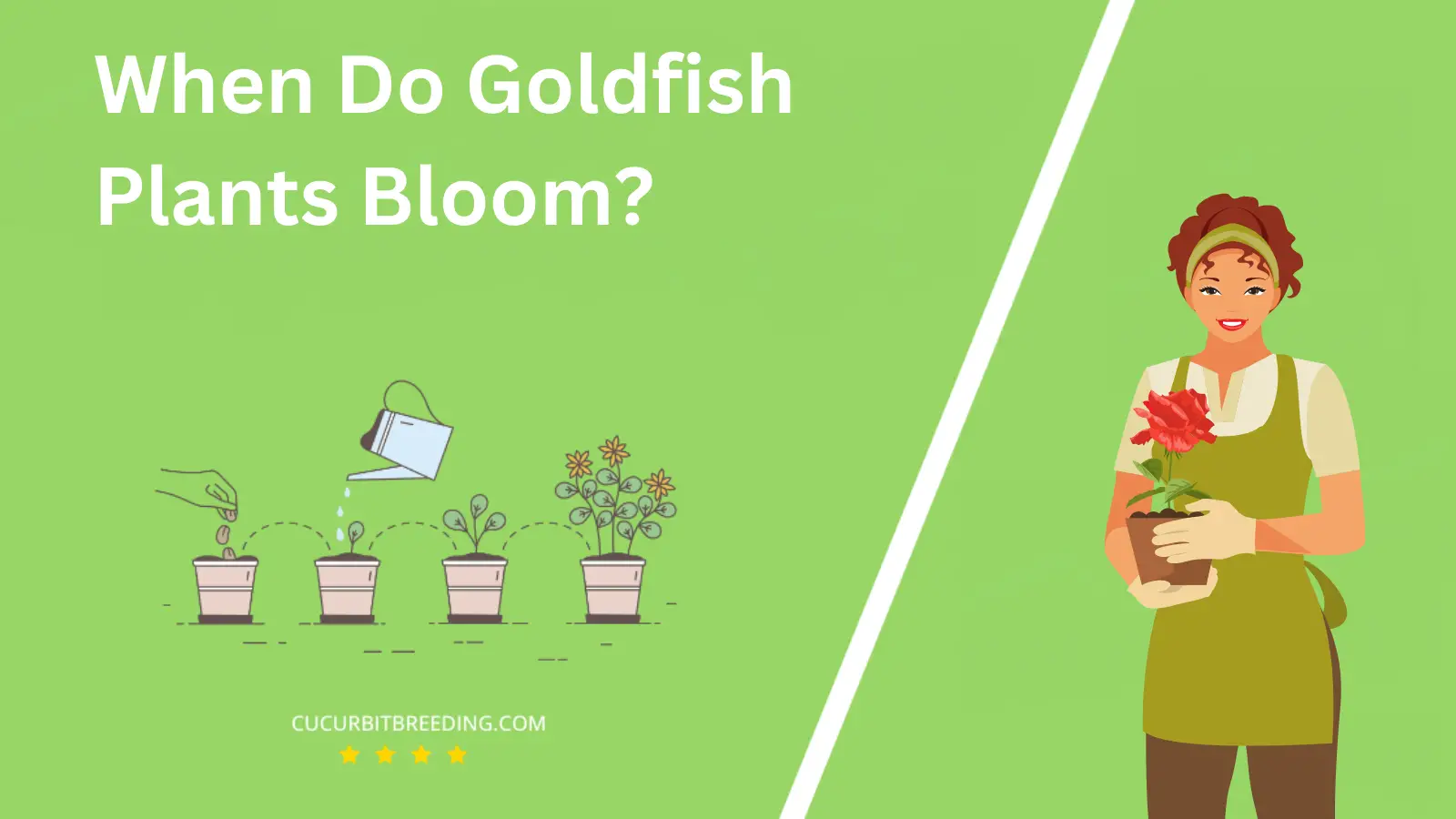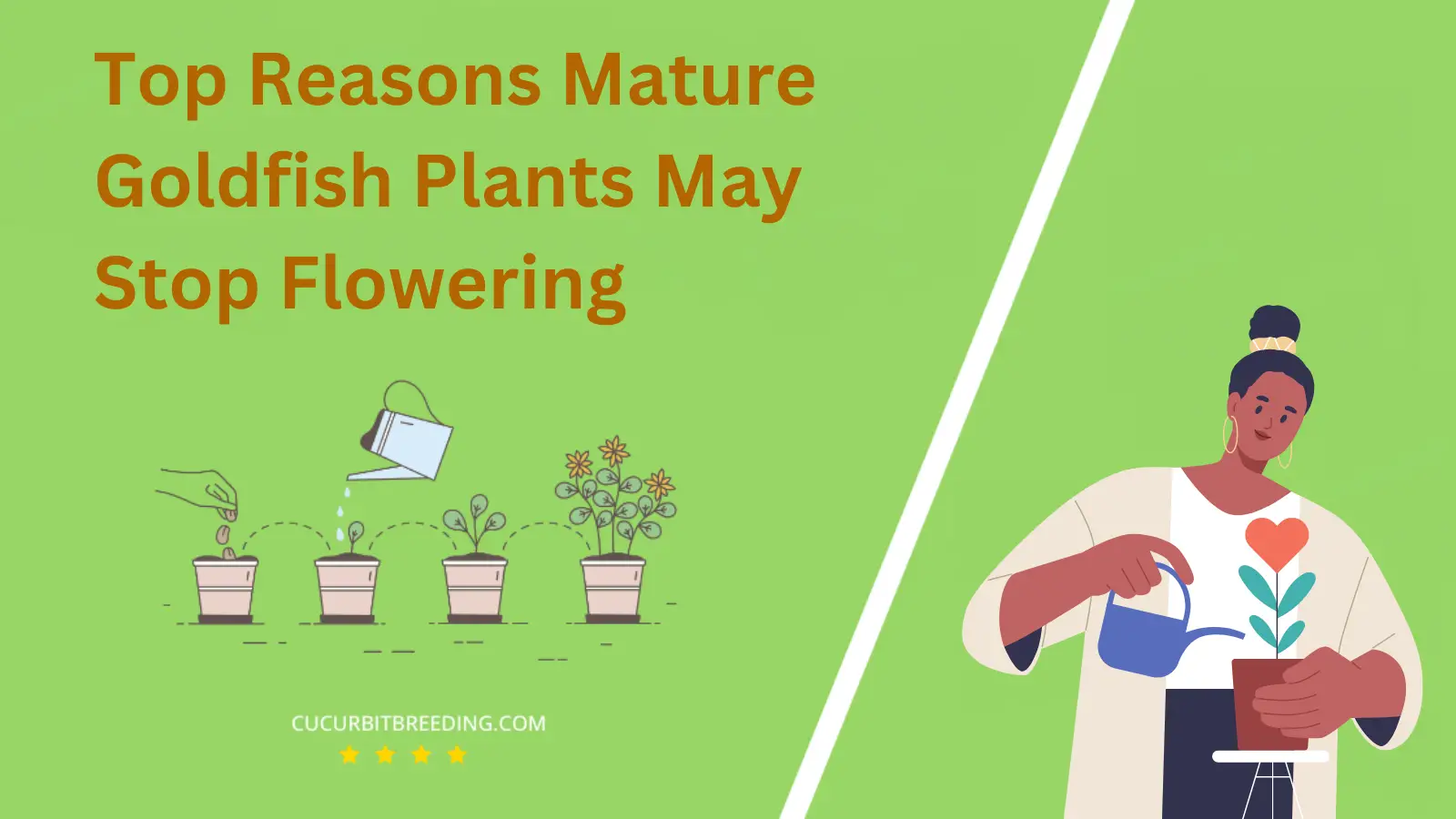
If you’re a lover of unique indoor plants, you may have wondered, “When do Goldfish plants bloom?” These captivating tropical beauties, known for their vibrant, goldfish-shaped blossoms, can truly transform your living space into a miniature greenhouse.
Understanding their blooming pattern requires a deep dive into their natural habitat and growth conditions. So, let’s embark on this fascinating journey of exploring the blooming secrets of Goldfish plants.
When Do Goldfish Plants Bloom?
Goldfish plants typically bloom between late winter and early summer. However, with the right conditions of bright light, high humidity, and consistent watering, they can bloom sporadically throughout the year.
| Stage | Description |
|---|---|
| Germination | Goldfish plants typically have a germination period throughout the year (no specific months specified). |
| Growth | Spring (March, April, May) |
| Blooming | Spring and summer (March to August) |
| Dormancy | Goldfish Plants have a dormant period during the winter months (December to February). |
How Long Do Goldfish Plants Bloom?
Goldfish plants bloom for a considerable length of time, often for many months in a year under optimal conditions. Provided with ideal temperatures, adequate light, and proper feeding, a Goldfish plant can bloom for several months, typically from both fall and spring or even longer. Note that the blooming period can vary based on environmental factors like light and temperature and the health of the plant itself.
How Light Affects Goldfish Plants Blooms?
Light greatly affects the blooming process of Goldfish Plants. These plants thrive and produce abundant blooms when they receive plenty of bright, indirect light. They should be kept near a window or a room that gets enough indirect sunlight throughout the day.
Without sufficient exposure to light, Goldfish Plants may not bloom at all or produce fewer flowers. They prefer bright but indirect sunlight because too much direct sunlight can cause the leaves to burn.
Also, rotating the plant periodically ensures all parts receive an equal amount of light. Following these conditions can significantly enhance the blooming of Goldfish Plants.
Will Goldfish Plants Bloom the First Year You Plant Them?
Yes, Goldfish Plants can bloom in the first year they are planted. However, this is contingent on providing them with the optimal growing conditions. These include indirect sunlight, high humidity, and temperatures between 65 and 75 degrees Fahrenheit. Additionally, they need well-draining soil and should not be overwatered. If these conditions are met, the Goldfish Plant can produce its distinct, vibrant blooms within the first year.
Will Goldfish Plants Bloom Every Year?
Yes, Goldfish Plants have the potential to bloom every year. These plants usually produce vibrant and uniquely shaped flowers multiple times throughout the year. However, it’s essential to provide them with the correct care conditions. This includes bright, indirect light and high humidity to stimulate and maintain their blooming cycle.

Should I Deadhead Goldfish Plants Blooms?
Yes, you should deadhead Goldfish Plants blooms. Deadheading, or removing spent flowers, helps to encourage more blooming and prevent the plant from entering a seed-making stage. This process also helps the plant to focus its energy on growth and continuous blooming, making your Goldfish Plant healthier and more visually appealing.
Top Reasons Mature Goldfish Plants May Stop Flowering

Mature Goldfish Plants may stop flowering for several reasons. Lack of adequate light can halt the blooming process, as these plants thrive in bright, indirect sunlight. If your plant is in a low-light environment, it might not flower.
Improper watering is another common issue. Goldfish Plants prefer well-drained soil and may not flower if they are overwatered or underwatered. It’s important to strike a balance to ensure the plant receives the right amount of moisture.
Additionally, poor nutrition can hinder flowering. These plants require a balanced fertilizer to stay healthy and produce flowers. If the plant is not receiving the necessary nutrients, it may not bloom.
Lastly, temperature and humidity levels can greatly impact a Goldfish Plant’s ability to flower. These plants thrive in warmer temperatures and high humidity. If the environment is too dry or cool, the plant may stop flowering.